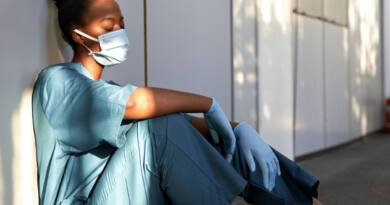Brisk Walking: A Proven Way To Unlock Vibrant Life
Published By WFY Bureau Desk | HEALTH AND WELLNESS | August 2025 Edition
Brisk Walking: A Powerful, Low-Cost Path to a Healthier Heart and Longer Life
In a fast-moving world where elaborate fitness regimes and gym memberships often dominate conversations about health, a simple, accessible activity is making quiet waves in medical research circles: brisk walking. Recent scientific findings suggest that a daily commitment to this humble exercise, especially when done with intent and pace,may dramatically reduce the risk of cardiovascular disease and even prolong life. For individuals across all economic and geographic backgrounds, brisk walking may well be the most underrated health intervention available today.
What Is Brisk Walking?
Brisk walking is defined as walking at a pace faster than a stroll, generally around 3 to 4.5 miles (5 to 7.2 km) per hour. It’s the pace at which you can talk but not sing a song comfortably. This is considered moderate-intensity aerobic activity, and it elevates your heart rate without putting undue strain on the body.
Unlike light walking, which may simply be moving from room to room or taking a slow stroll with a pet, brisk walking introduces intensity that activates cardiovascular benefits. It helps improve circulation, strengthens the heart muscle, and triggers the release of endorphins, commonly known as “feel-good” hormones.
The Study That Changed the Conversation
A ground breaking study recently published in the American Journal of Preventive Medicine has brought renewed focus on the power of brisk walking, particularly in underrepresented communities. The research followed 85,000 participants from 12 south-eastern states in the United States over a span of 17 years. Most participants were from low-income, predominantly Black communities and reported annual incomes below $15,000.
The findings were striking. Participants who walked briskly for at least 15 minutes a day had a 20% lower risk of death, compared to those who walked slowly or not at all. Slow walking also showed health benefits, but the impact was modest, only a 4% reduction in mortality, and only when done for more than three hours daily.
Importantly, the health impact was even more pronounced in individuals with pre-existing health conditions such as obesity or diabetes, with brisk walking offering a highly effective and affordable preventive measure.
Why Pace Matters More Than Duration
Traditionally, public health messages have encouraged people to aim for 150 minutes of moderate-intensity physical activity per week. While duration remains relevant, this new study places stronger emphasis on the intensity of physical movement.
A person walking briskly for 15 minutes may derive more cardiovascular benefit than someone who strolls slowly for an hour. The body responds more favourably to the cardiovascular challenge posed by a faster pace, which stimulates the heart and lungs and improves muscular strength and endurance.
This insight changes the equation for many people with limited time or resources. Brisk walking, being both free and time-efficient, becomes a potent tool for those juggling multiple jobs, family responsibilities, or living without access to structured exercise facilities.
Cardiovascular Disease: A Silent Global Threat
Cardiovascular diseases (CVDs), including heart attacks, strokes, and hypertension, are the leading cause of death worldwide. According to the World Health Organization, CVDs account for over 17.9 million deaths annually, representing nearly 32% of all global deaths. Most of these deaths are preventable with lifestyle modifications.
In India alone, CVDs are responsible for nearly 28% of total deaths, and the burden is rising. Sedentary lifestyles, unhealthy diets, tobacco use, and physical inactivity contribute significantly to this crisis.
Brisk walking, as a moderate-intensity aerobic activity, is particularly effective in reducing risk factors associated with cardiovascular disease. It improves lipid profiles, lowers blood pressure, reduces inflammation, and enhances insulin sensitivity, all of which are crucial in maintaining heart health.
The Equity Angle: Health Access in Low-Income Communities
One of the standout aspects of the study is its focus on low-income and marginalised populations, groups often excluded from traditional health and fitness research. These communities often face multiple barriers: unsafe neighbourhoods, lack of recreational facilities, long working hours, and limited disposable income.
Yet, the study proves that even in these environments, brisk walking, without any equipment, subscriptions, or training, can deliver outsized health benefits. Walking can be performed indoors or outdoors, in short bouts, and without any specialised gear. The only requirement is a conscious effort to walk faster.
This makes brisk walking a great equaliser, an activity accessible to nearly everyone, regardless of geography, socioeconomic status, or age.
Brisk Walking and Mental Health
In addition to physical benefits, brisk walking has been shown to improve mental well-being. Regular brisk walking has been associated with reductions in depression and anxiety, and improvements in sleep quality, self-esteem, and cognitive function.
Walking outdoors,especially in green spaces,offers additional benefits through exposure to sunlight and nature, both of which have calming effects and help regulate the circadian rhythm.
Even short walks during work breaks or before bedtime can reduce stress and increase productivity.
Walking Innovations: From Japan to the World
In countries like Japan, the practice of interval walking, alternating periods of brisk and slow walking,has gained popularity. Studies have shown that interval walking for just 30 minutes a day can significantly enhance aerobic capacity and reduce blood glucose levels.
Similarly, “urban walking” movements have been promoted in many Western cities, encouraging people to commute or run errands on foot instead of relying on cars or public transport.
In India, traditional walking practices like parikrama around temples or circumambulating sacred sites serve not just spiritual but health-enhancing purposes. With minor modifications in pace, these too can become cardiovascular-friendly.
Community Interventions: How Societies Can Support Walking
Despite its accessibility, walking is often hindered by urban planning that favours cars over pedestrians. In many cities, especially in developing nations, walking is risky due to poor footpaths, pollution, traffic, or safety concerns.
To fully harness the health benefits of brisk walking, governments and local bodies must:
- Invest in pedestrian-friendly infrastructure, such as clean footpaths, green parks, and walking tracks.
- Encourage walking groups or clubs, especially for senior citizens and women who may feel unsafe walking alone.
- Include walking breaks in office schedules, particularly in sedentary desk jobs.
- Promote walking to school and work, supported by policy-level encouragement such as tax breaks or insurance discounts.
Workplace health policies can also include 15-minute walking breaks, which improve focus, lower stress, and reduce sedentary time.
What Medical Experts Recommend
While every individual’s capacity is different, general medical consensus is that walking briskly for 30 minutes five times a week meets the recommended level of moderate-intensity activity. However, even shorter bouts of 10–15 minutes can offer substantial benefits if done consistently.
To gauge whether you’re walking briskly enough, a simple guide is to walk at a pace that makes it difficult to sing but still allows you to talk.
For those with medical conditions or mobility challenges, a consultation with a healthcare professional is advised before starting a new walking routine.
Global Trends in Walking Research
Interest in walking as a health intervention is growing worldwide. The National Health Service (UK) runs a “One You” walking initiative with a mobile app called Active 10, which tracks brisk walking sessions.
In the U.S., walking audits have been introduced in communities to assess the walkability of neighbourhoods and promote healthier urban design.
Even in digital health, smart watches and mobile fitness apps now track steps, speed, and intensity, nudging users toward brisk walking goals.
The Way Forward: A Health Movement on Foot
As the world continues to grapple with rising rates of chronic diseases and lifestyle-induced ailments, brisk walking offers a low-cost, high-impact solution. It may not carry the glamour of a marathon or the intensity of a spinning class, but in simplicity lies its strength.
More than a fitness trend, brisk walking is a catalyst for public health, a step,quite literally, towards better longevity, resilience, and well-being.
In an age when the answers to health are often sought in complexity, brisk walking reminds us that movement is medicine, accessible, sustainable, and effective. For individuals, communities, and nations alike, this could be the key to turning the tide against cardiovascular disease and premature mortality.
Disclaimer: This article is based on publicly available scientific findings and general wellness guidance. It is intended for informational purposes only and should not be considered a substitute for professional medical advice. Always consult your healthcare provider before making significant changes to your physical activity routine.




